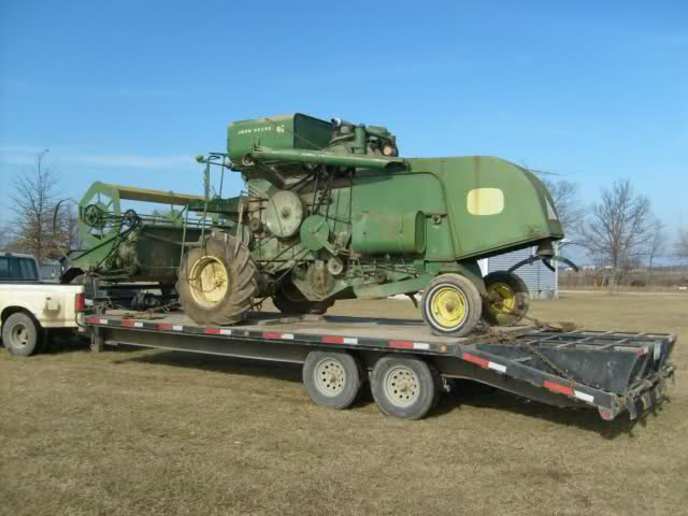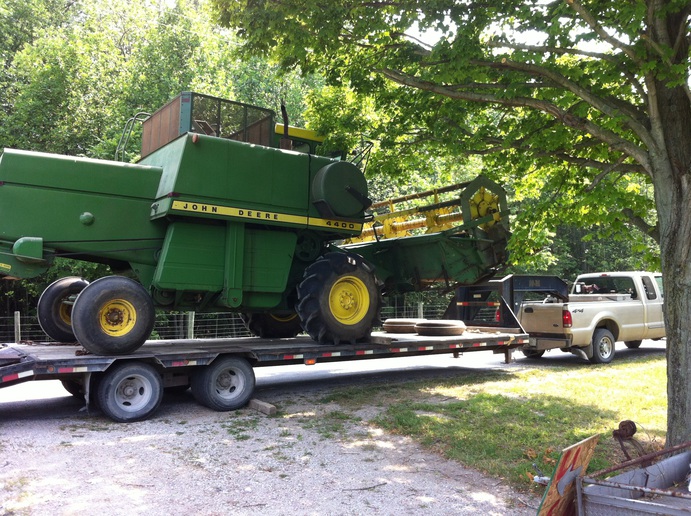Tree-Farmer
Member
I plan to rent a trailer to haul a JD 4400 combine that I just bought. Pull the flatbed trailer behind my pickup.
I’m concerned about the height. Specs say it’s 11 feet 3 inches tall. The flatbed trailer is 3 feet tall.
So that’s 14 feet 3 inches.
Question: Are all the wires across the road higher than that, on secondary roads?
I’ve been driving the route, before I load it and some wires look low.
I think it’s telephone wires. The electric wires seem higher. Some telephone wires seem to come out of the ground, then the wire goes up a
pole, and crosses the road, but it’s not as high as the power lines.
Is there a spec on this? How high are these wires supposed to be?
Has anyone had any trouble with this?
Plus, How about Stop Lights? What’s their clearance? I need to drive thru Sedalia, MO
Question 2: How do I load a combine? Should I use a winch and not drive it on?
Is forward or backward better? Is one direction more stable?
Thank you,
(That picture is not my combine, but would be something like that)

I’m concerned about the height. Specs say it’s 11 feet 3 inches tall. The flatbed trailer is 3 feet tall.
So that’s 14 feet 3 inches.
Question: Are all the wires across the road higher than that, on secondary roads?
I’ve been driving the route, before I load it and some wires look low.
I think it’s telephone wires. The electric wires seem higher. Some telephone wires seem to come out of the ground, then the wire goes up a
pole, and crosses the road, but it’s not as high as the power lines.
Is there a spec on this? How high are these wires supposed to be?
Has anyone had any trouble with this?
Plus, How about Stop Lights? What’s their clearance? I need to drive thru Sedalia, MO
Question 2: How do I load a combine? Should I use a winch and not drive it on?
Is forward or backward better? Is one direction more stable?
Thank you,
(That picture is not my combine, but would be something like that)



